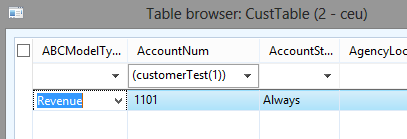Custom Query Range Functions using SysQueryRangeUtil
Filed under: #daxmusings #bizapps
You’ve probably seen these requests before. Users want to submit some report or other functionality to batch, and the query should always be run for “yesterday”. It’s a typical example where, as a user, it would be handy to be able to use functions in your query range. Well, you can. And in fact, you can make your own, very easily!
Enter the class “SysQueryRangeUtil”. All it contains is a bunch of static public methods that return query range values. For example, there is a method called “day” which accepts an optional integer called “relative days”. So, in our example of needing a range value of “tomorrow”, regardless of when the query is executed, you could use day(-1) as a function. How this works in a range? Just open the advanced query window and enter your function call within parentheses.
Let’s make our own method as an example. Add a new method to the SysQueryRangeUtil class, and enter the following, most interesting code you’ve ever encountered.
<pre>public static str customerTest(int _choice = 1)
{
AccountNum accountNum;
switch(_choice)
{
case 1:
accountNum = '1101';
break;
case 2:
accountNum = '1102';
break;
}
return accountNum; }</pre></code>
So, this accepts an options parameter for choice. If choice is one (or choice is not specified), the function returns 1101, if 2 it returns 1102. Save this method and open a table browser window on the CustTable table. Type CTRL+G to open the grid filters. In the filter field for the AccountNum field, enter: (customerTest(1)).
So, the string returned from the method is directly put in the range. So, you could do all sort of interesting things with this, of course. Check out some of the methods in the SysQueryRangeUtil as examples.
There is no comment section here, but I would love to hear your thoughts! Get in touch!
Blog Links
Blog Post Collections
- The LLM Blogs
- Dynamics 365 (AX7) Dev Resources
- Dynamics AX 2012 Dev Resources
- Dynamics AX 2012 ALM/TFS
Recent Posts
-
GPT4-o1 Test Results
Read more... -
Small Language Models
Read more... -
Orchestration and Function Calling
Read more... -
From Text Prediction to Action
Read more... -
The Killer App
Read more...
 Menu
Menu

